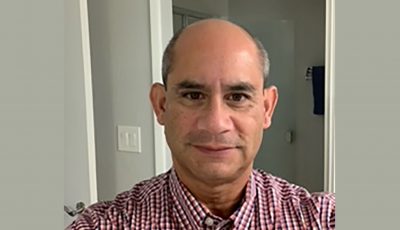Truth and lying
My brother once referred to one of my columns on our mother as a “pack of lies.” We were not at the time in the best of terms so I dismissed his comments as expressing hidden hostilities until another brother essentially said the same thing. Conversant with the wisdom of Brad Blanton’s Radical Honesty that sees all humans trained to lie, or the popular spirited atheist Sam Harris’ write-up on Lying, that came as a wake-up call on the level of knowledge I thought I was very careful about in my writings.
I tried to understand the import of words I used. “Lies” in my vocab results from attempts to deceive but there I do use metaphors. Perhaps I just use too much of it! Not a conscious liar nor deceiver, I am, however, clear that my brothers have seen something that I don’t. (Would be helpful if they’d go into details!)
An additional possible view is that my brothers do not see “truth” from what might be fuzzy facts of metaphors, analogies and similes. In the spectrum of knowledge, I classify four types of knowing (like all typology, this serves the mind more than clarity on knowledge): the indicative (fact), subjunctive (sentiment), cognitive (discursive), and imperative (deed). The adage “Truth is in the pudding” reflects the understanding that it is the deed that is the done deal.
The worldwide network of the Institute of Cultural uses the O.R.I.D. formula in imaginal education. In their technology of participation, the letters stand for: O=objective, R=reflective, I=interpretive, and D=decisional.
There is nothing esoteric about this scheme, following stimuli that the brainstem receives as sense experience is registered, with emotional expressions processed in the middle brain, cognitive functions in the outer brain, and the whole cranium along with the heart, bile, kidney, stomach, liver and gut colloquially determining the course of action.
Science introduced quantifiable terms at the objective level, measureable within a spectrum. Colleges are organized according to disciplines to determine specific fields of knowledge. The widely used metaphor is that of sight: tell me what you see, draw me a picture. The sense experiences of touch (skin), sound (ear), smell (nose), and taste (mouth) are the other proper subjects of science. Dominant biology and ecology are sensual, cuisine is a universally popular folk art, scents are on the first floor of department stores.
Internal responses are of two kinds: the emotional and intellectual. They are not verifiable but can be shared. For sure, one can use such terms as real or authentic, but those are judgments of the onlooker. “I know how you feel” is empathy, not accurate sense knowledge. Psychology is our science on interpersonal and human relations, with the other side of the coin sociology, the development, structure, and functioning of society.
Symbol, picture, image, and emblem used in simile, allegory, idiom and parable express emotions. Intensity of passion measures the quality of response. Looking at how others respond, identifying similarities and contrasts, likeness and dissonance, parallels and contradictions and discussing the same with others in words, numbers and gestures, constitute the activity of comparing and arriving at social significance and meaning.
When EU used “sanctions as strategy” to pressure Russia, a means at a negotiating advantage, Russia came back to suggest that it will take first strike a Russian option, including the nuclear one. I am hopeful the rhetoric stays at the level of verbal threat without proceeding to the scary level of behavior.
George II Bush sent troops to Iraq on the notion that preemptive military offense is the best defense of national security post-9/11. Obama sets his cross sights on the renegade Islamic State and, not surprisingly, receives the same criticism he levels against Russia of violating sovereign integrity sans consent of the sitting executive when he leers at Syria!
Ethics point to behavior where consensus is possible. Two service providers for the autism community have one saying, “Vaccines saved a lot of lives” and the other, “Vaccines can cause inflammation of the brain.” I see them both as being defensibly truthful. Consensus is not in facts, psychological affirmations, and sociological verities, though sharing can lead to it. It is in conduct that consensus is possible.
The question is not whether we sense, feel, or think similarly; the issue is whether we are headed in the same direction, behave in tandem. If a question asks for a “yes” or “no” answer, it is a question of what to do and how to act, rather than an agreement on feelings and meanings. My brothers and I might differ and may not see similar truths from the same metaphors but it does not mean anyone is lying!
I often want to scream at friends who empathetically say, “I understand” when they possibly couldn’t, but folks do express different perspectives and views, and for that, I am grateful.



























